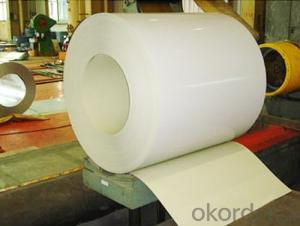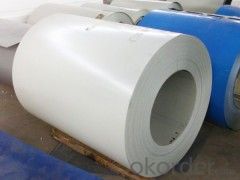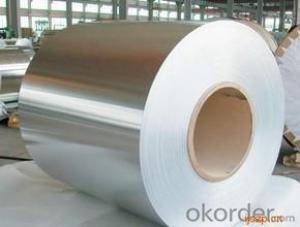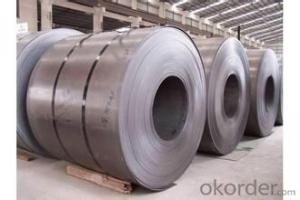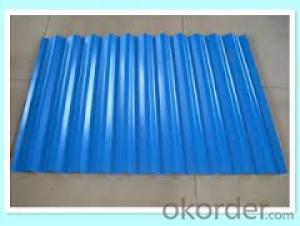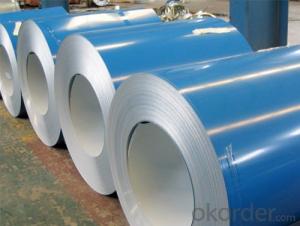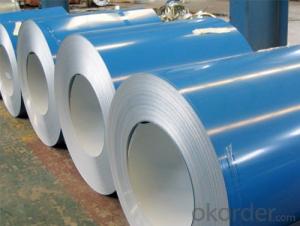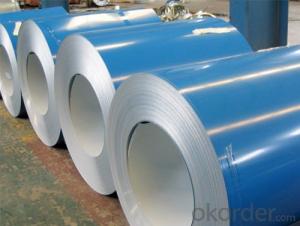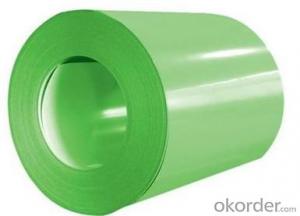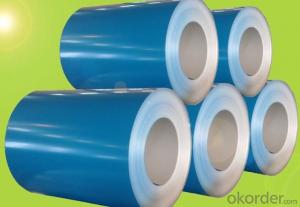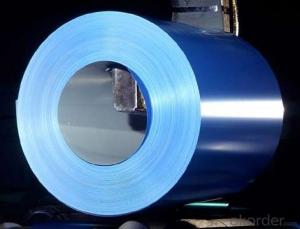Pre - painted Galvanized/ Aluzinc Steel Sheet Coil with Prime Quality and Lowest Price
- Loading Port:
- Shanghai
- Payment Terms:
- TT OR LC
- Min Order Qty:
- 100 m.t.
- Supply Capability:
- 10000 m.t./month
OKorder Service Pledge
OKorder Financial Service
You Might Also Like
1.Structure of Pre-painted Galvanized/Aluzinc Steel Coil Description
after firing and cooling, finally the plate steel is called pre-painted galvanized (aluzinc) steel. Pre-painted galvanized steel is good capable of decoration, molding, corrosion resistance. It generally displays workability, durability and weather resistance.
2.Main Features of the Pre-painted Galvanized/Aluzinc Steel Coil
• Excellent corrosion resistance
• Excellent weather resistance
• High strength
• Good formability
• Good visual effect
3.Pre-painted Galvanized/Aluzinc Steel Coil Images
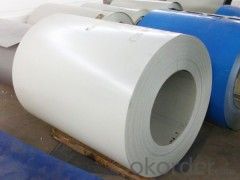
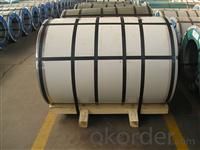
4.Pre-painted Galvanized/Aluzinc Steel Coil Specification
Quality standar: JIS G3312 CGCC & CGLCC
Width : 914mm, 1000mm, 1220mm and 1250mm, thickness 600-1250mm is available
Paint thickness for top side : 5 micron primer + (10-20) microns modified polyester, any RAL color code.
Hardness of P: Both soft and hard quality are available
Finish by coil or sheet: Both sheet and coil are available
8Zinc coating: 60-275G/M2, both sides
Surface finish: with or without protect film
Thickness : 0.14-1.20 mm
Paint thickness for back side: (5-10) microns Epoxy
5. FAQ of Pre-painted Galvanized/Aluzinc Steel Coil
We have organized several common questions for our clients,may help you sincerely:
1. What is the minimum order quantity ?
And we will consider to give more discount if you make big order like 1000 tons and more. Further more, the more appropriate payment term your offer the better price we can provide.
- Q: Building the bulwurk, general use on trawlers. What kind of steel is best suited.
- Best amusing on right here in a while ,simply heading to the harbour bar to look at the fleet are available ,Booboo edged for me ,preferred the Liverpool one ,probably subsequent time we ll inform Chrispen its just a pleasant raid ,however excellent ,the entire equal
- Q: Which movie is better and why?I say Man of Steel!
- Pretty hard, I feel like Captain America The First Avenger had less flaws, but I more enjoyed Man Of Steel. I don't know why people didn't like how Cap first started out with advertising/singing and all that. I actually applauded Marvel for having the guts to stay true to the character's origin. Henry Cavill has the best look for Superman in my opinion, but I do agree with the critics that say he doesn't reflect the character's personality accurately. He's too dark, reminds me of Batman, but if he talked less. I disagree with the Superman killing conflict. True, the character is not a killer, but that's exactly why they wrote that in. Internal character conflict. Put him at war with himself. Plus, it gave the grand opportunity to give Doomsday his new origin, which I kinda liked. In the end, I'll say Man Of Steel, they really dove deep into that movie, it was well written and had a great plot. I loved seeing and learning more of Krypton. Crazy how I'm not even a huge Superman fan????
- Q: How does the steel coil market vary regionally?
- The steel coil market varies regionally based on factors such as demand, production capacity, and market dynamics. Different regions have different levels of industrial development and infrastructure, which can affect the demand for steel coils. Additionally, variations in raw material availability, labor costs, and government policies also contribute to regional differences in the steel coil market. For example, developing regions may have higher demand for steel coils due to infrastructure projects, while mature markets may focus on specialized steel coil products for specific industries. Overall, regional variations in the steel coil market reflect the unique economic and industrial characteristics of each region.
- Q: I'm assuming that brass is flexible, expands and then bounces back to it's original shape. But if aluminum and steel expand and don't contract wouldn't they cause guns to jam more often for example?
- This Site Might Help You. RE: Why can aluminum and steel casings not be used for reloading? I'm assuming that brass is flexible, expands and then bounces back to it's original shape. But if aluminum and steel expand and don't contract wouldn't they cause guns to jam more often for example?
- Q: I want an EDC (Every Day Carry) Knife that:~folds~is non-serrated~has a pocket clip~has a blade length of about 4 in. long~is concealable~urban environment friendly~priced around $50What do you suggest? I am currently thinking on purchasing the Cold Steel 4 inch Zytel Ti-Lite.
- Based okorder /
- Q: who, when and where was dual phase steel invented?
- Looking okorder /... but I would note that this stuff seems an awful lot like the techniques that have been used for making high quality swords and cutting tools for thousands of years including the famed Damacas steel. In these, the steel is heated and slowly cooled (annealed) to produce the tough matrix, then the piece is reheated and quenched to produce the hard edge. What Dual-phase seems to do is bring the process to bulk manufacture.
- Q: We are going to build a house with a steel frame.Someone told me today that these houses have problems with humidity.Is that true?Please tell me all you know..
- the building I work in is steel framed, no humidity problems. I can't believe that steel frame anything causes humidity problems. I would ask for an explanation from whom ever told you this. One thing is cell phones, radios etc. have bad reception due to all the interference.
- Q: Where can I find a great deal online for Danesco Stainless Steel Egg Poacher
- Cheapest place to buy Danesco Stainless Steel Egg Poacher is amazon, and the price is $34.99. For more information check the link below....
- Q: What is the process of uncoiling a steel coil?
- The process of uncoiling a steel coil involves feeding the coil into a machine called a decoiler. The decoiler holds the coil and gradually unrolls it, allowing the steel to be straightened and fed into downstream manufacturing processes. This is typically done by using a combination of motorized rollers and tension control systems to ensure a controlled and smooth uncoiling process.
- Q: Hi can someone help me pleaseis there any available data for mechanical behaviour of recycled steel, i need to compare them with new steel.
- It is not clear from the question whether the recycled steel is used in its existing state or used as raw material for further fabrication. For the existing steel, you need to track down the original documents such as the ladle analysis and mill certificates certifying the material standards for which the steel was fabricated. Another alternative is take samples and conduct chemical and mechanical tests on the steel. Also the date of when the structure was built from which the steel is recycled may help indicate whether it is (American Society for Testing and Materials) Standard ASTM A7 or ASTM A36 or another type of steel. In most cases, the steel is used as raw material to make new steel. The mill will adjust the additives to produce steel with the required chemical and physical properties to meet the ASTM standards specified.
Send your message to us
Pre - painted Galvanized/ Aluzinc Steel Sheet Coil with Prime Quality and Lowest Price
- Loading Port:
- Shanghai
- Payment Terms:
- TT OR LC
- Min Order Qty:
- 100 m.t.
- Supply Capability:
- 10000 m.t./month
OKorder Service Pledge
OKorder Financial Service
Similar products
Hot products
Hot Searches
Related keywords
